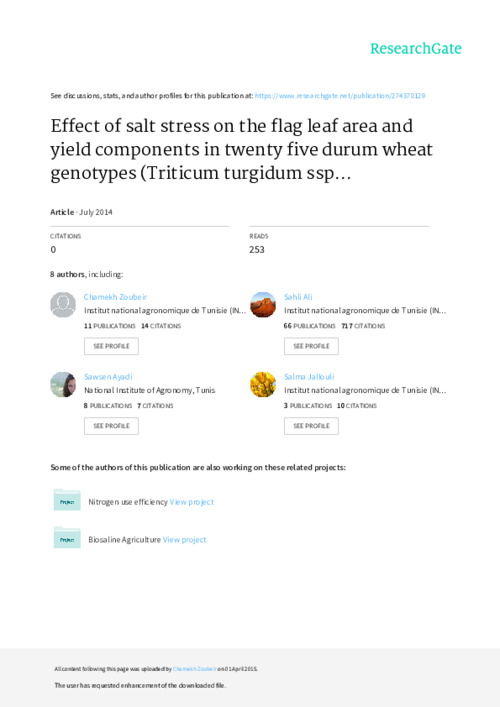Effect of salt stress on the flag leaf area and yield components in twenty five durum wheat genotypes (Triticum turgidum ssp. durum)
Abstract
Salt stress is considered to be a
major limiting factor for plant growth and crop
productivity. In this study, effect of salinity on
leaf area, ion accumulation (Na+, K+) and
component yield (grain number per spike,
1000 grain weight, number of spikes per m²
and grain yield) were investigated in twenty
five genotypes of durum wheat (Triticum
turgidum ssp. durum) cultivated in three
different regions in Tunisia center (Echbika,
Barrouta and Sidi Bouzide). These sites differ
by their salinity degree in the irrigation water
respectively 2.1 (control), 4.3 and 5.2 g/l. As a
result salt stress the flag leaf area decreased
significantly for the most of genotypes with
the increase of stress treatments except
“Mahmoudi, Om Rabia, N, Maali, Khiar and
Jneh Khotifa”. Na+ concentrations increased
with increase in salinity but K+ concentration
was lower as salinity levels increased for all
cultivars expect “Mahmoudi” and “Hamira”
cultivars. Thus, less Na+ accumulation and
more K+ content in these genotypes at the
highest salt level, confirm salt tolerance of
these cultivars. Grain number per spike, 1000
grain weight, number of spikes per m² and
grain yield showed a reduction with increase in
root zone Stalinization but the effect was
varied in different durum wheat genotypes. It
was concluded that the conservation of the leaf
area and a low concentration of Na+ in the flag
leaf will improve the salt tolerance of wheat
genotypes in breeding programs

